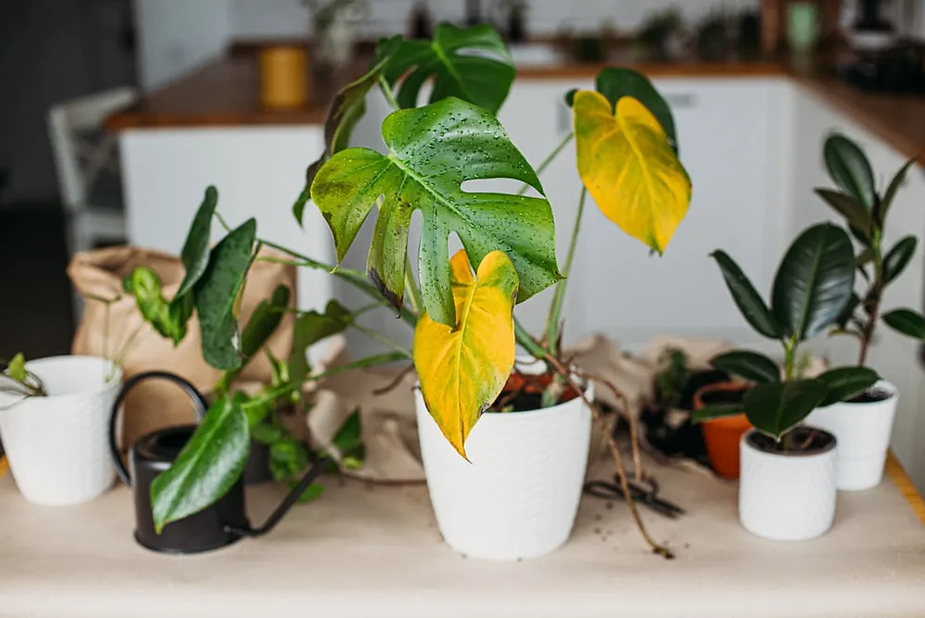Why are my houseplant's leaves turning yellow?
Here at NODE, we've seen (and heard) it all. One of the most common questions we get asked is why some of my houseplant's leave turn
yellow. Guess what? It happens to all of us!
Just like people, plants have ups and downs, and grow and change over time. Their complaints tend to manifest physically, instead of with
words though. Once you become a plant parent, you'll learn to read your plant's behavior and get better and better at assessing issues and plant
health.
And guess what? And some point or another you'll be seeing yellow leaves which will fall off. It's inevitable. Yellowing leaves on your
houseplants can be caused by a number of reasons. Just remember that, regardless of what you do, a certain amount of yellow leaves can be
expected because it happens naturally when plants age. It's just a part of the leaf life cycle. Don't fret.
If yellow leaves begin to appear on your what-was-once-perfectly-green-plant, read on to find out the six common reasons why. And don't
panic - it's going to be fine!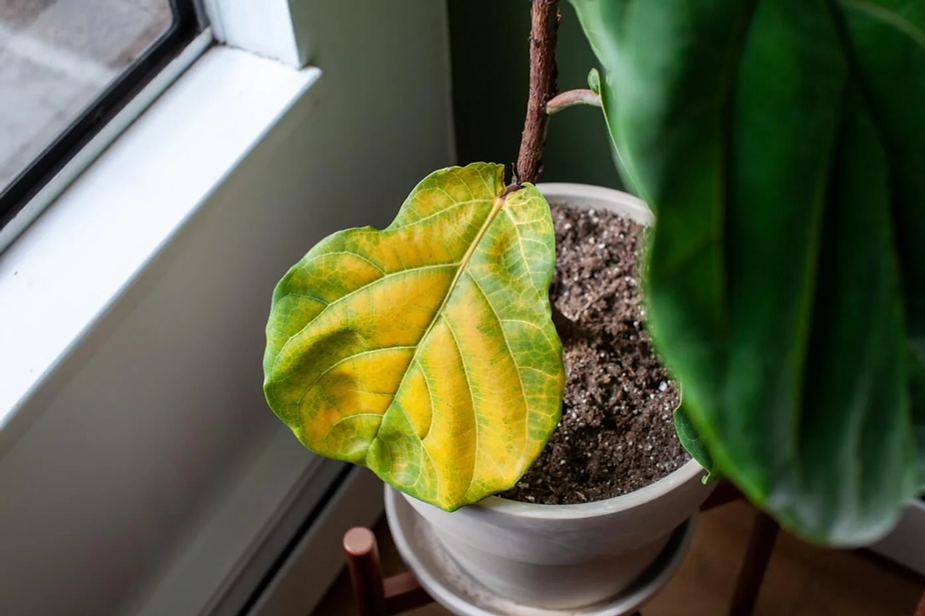
1. Moisture stress - your watering game is off
Generally speaking, overwatering or underwatering are the most common culprits when it comes to yellowing leaves. Listen, we get it. Those
are two extremes and it's hard to tell what you might have messed up. With potted plants, it is crucial that you only water as much as the
plant needs, which means you need to read up on your plant and its watering requirements. Do your research.
So you've got yellow leaves, check the soil in the pot. Is it dry? Is it soaked? If it's a fussy plant, consider investing in a water
meter.
Or if you're a chronic overwaterer, perhaps add activated charcoal
into your soil mixtures which helps with absorption and rot prevention.
If plants don't receive enough water, they will begin to drop leaves to conserve water. Before they fall off, the leaves will often turn
yellow. If the soil is dry and this is happening, make it a point to get the plant on a regular watering schedule.
Overwatering is even worse. Plants, by nature, are deigned to withstand periods of no rain or drought in the wild, but if they become
oversaturated with water that doesn't drain away the roots will rot and that's hard to come back from. Without oxygen, roots start to die,
and this often manifests in yellowing leaves. You'll need to unpot your plant, clean off the rot from the roots with Hydrogen
Peroxide,
and repot in fresh soil.
2. She's aging, which is normal
Just as we show signs of aging, plants do too. As plants grow older, their lower leaves will turn yellow and drop off. This is simply a
normal part of their growth. Calm down. Don't panic.
This is one reason I often caution people who purchase plant cuttings not to fuss to much on the state of the leaf - most of the time, those
first leaves die off as the plant diverts its energy into growing healthy roots. Roots will always beat out foliage when it comes to healthy
plants. Happy roots = happy plants. Unhappy roots = dying plants.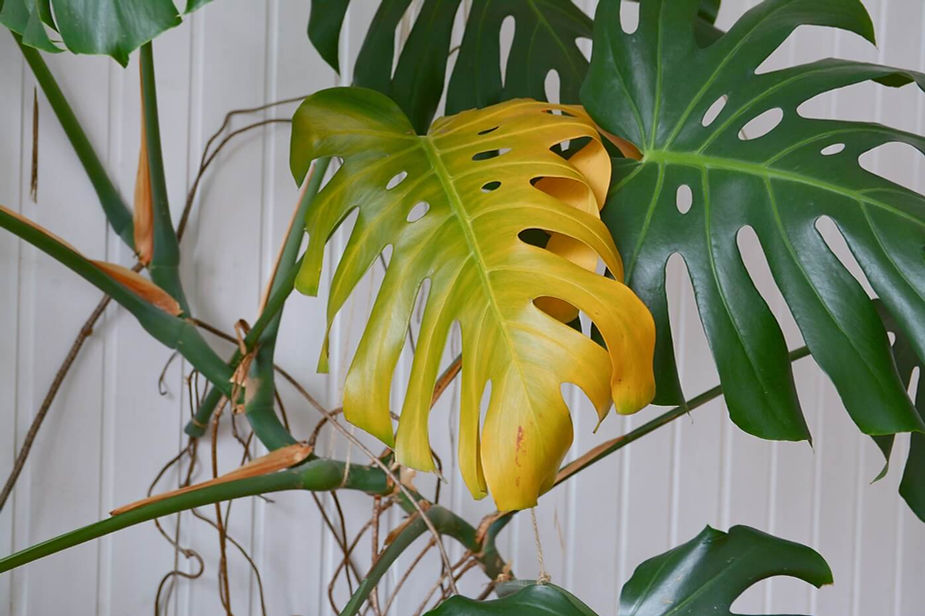
3. Is it drafty?
Remember pretty much all of our houseplants in New Zealand come from the tropics where 15 degrees is considered freezing. Here in Lyttelton,
15 degrees is tropical! This means cold drafts will upset most of your plants, except for maybe maidenhair ferns and ZZ's. If your plant
shows yellow leaves, check to see if it's getting drafts. If your plant is in the line of fire from a heatpump used as air conditioning or
near a drafty window or door, consider moving it out of the way.
Cold drafts on tropical plants will often cause the leaves to turn yellow and drop. This is different from short periods of exposure to
intense cold, which will cause outright browning on the foliage or pale, transparent spots to appear between veins.
4. Is your plant getting enough light?
If you're plants don't get enough sunlight they can begin to yellow especially on the lower leaves. If this lack of light is the culprit,
there are some clues you can look out for. A plant that is yellowing from from not getting enough sunlight will typically yellow on the side
that is away from the light source; i.e. the leaves near the window are green while the leaves facing the room might yellow.
It's a good reminder that you should be rotating your plant regularly to prevent it from leaning towards the light and to make sure it's
getting enough sunlight. You might also need to move your plant somewhere sunnier according to its needs, or even invest in a grow
light.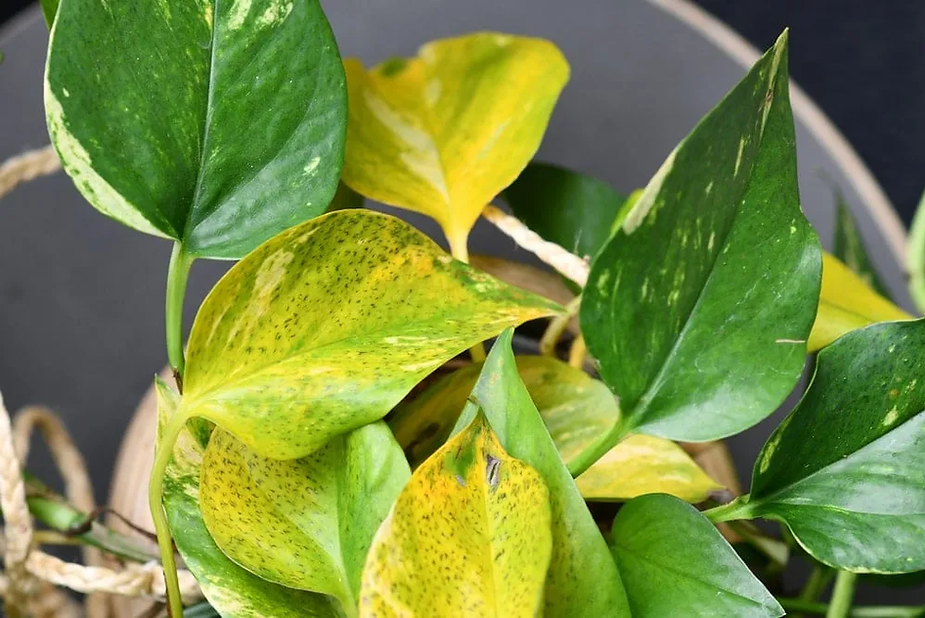
5. Nutrient deficiency
Another issue that can cause yellowing leaves on houseplants if it is not receiving all of the nutrients it requires. This can be caused by
too much calcium in the water if you're using hard water or by a nitrogen deficiency. It can even be caused by not fertilizing your plant.
Because houseplants are contained in a pot, they will eventually suck up all the nutrients in the soil which will need replacing. Make sure
during the growing seasons like spring and summer when your plant is actively producing new leaves, that you supplement your watering regime
with fertilizer like Dyna-Gro (personal fave) or
with plant food.
If nutrient deficiency is the problem, the plant's top leaves may be the first to go yellow. In other cases, you might notice an unusual
pattern to the yellowing.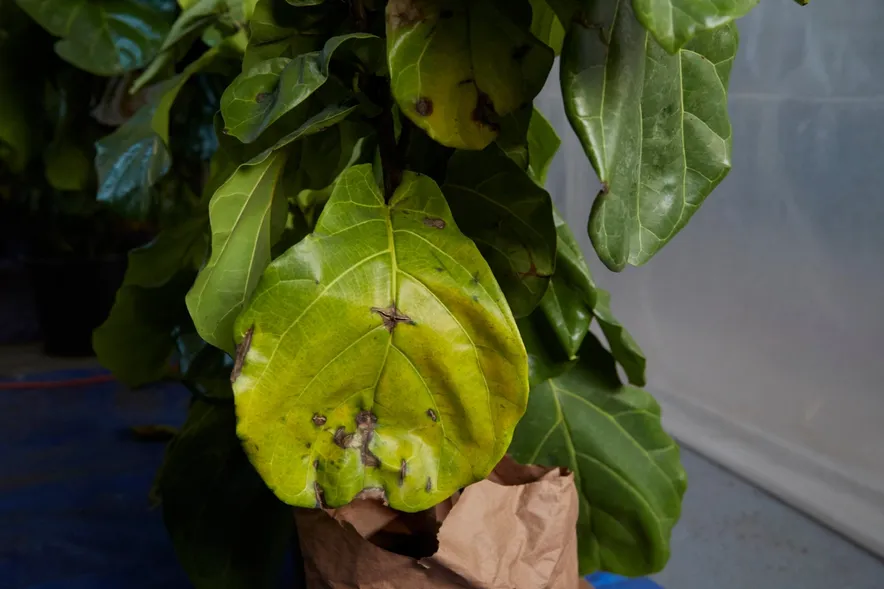
6. It might have a viral infection, though probably not COVID
Too soon for COVID jokes? If your plant has a viral infection, it might show up as blotchy, yellow patches on leaves that spread throughout
the plant. This may be accompanied by deformed leaves and stems. Unfortunately, many plant viruses are incurable and they can infect other
healthy plants. So if you suspect a virus, quarantine your polant straight away. You can take steps to save the plant, but you must first
attempt to identify the virus. Some remedies can involve fungicides, while others may require removing healthy parts and propagating.
Otherwise, to the green bin they go!
Have any tips for dealing with yellowing leaves and who the culprit might be? Share!